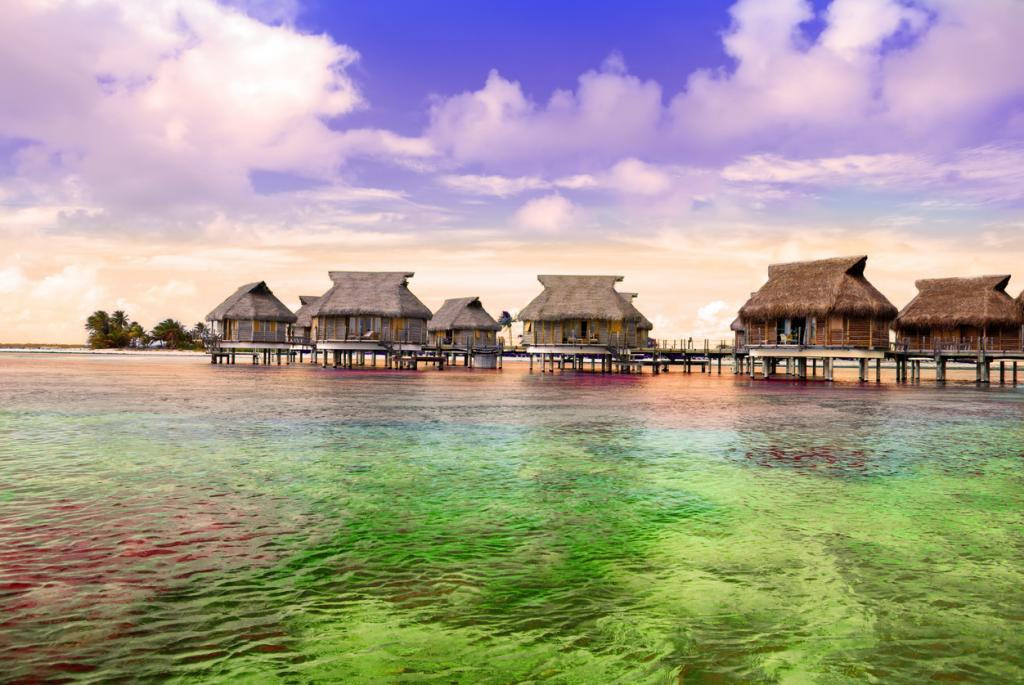





Disclaimer: Copyright infringement is not intended.
Context:
|
Seagrass expansion |
●Contrary to expectations, seagrass is found three times more often near inhabited islands rather than uninhabited ones, suggesting a possible link between human presence and seagrass growth. |
|
Drivers of Seagrass Expansion |
●The expansion of seagrass habitats in the Maldives may be attributed to nutrient supply from densely populated areas, such as tourist resorts. ●Human activities like food waste disposal into the sea and runoff from agricultural fertilizers contribute to increased nutrient levels, benefiting seagrass growth. ●Land reclamation projects, a response to the country's expanding population, also inadvertently create more suitable habitats for seagrass by promoting sedimentation. |
|
Challenges in protecting Seagrass |
●Habitat Destruction: Seagrass habitats are often threatened by coastal development, dredging, and land reclamation projects. These activities disrupt the seabed, destroy seagrass beds, and reduce the available habitat for marine life. ●Pollution: Pollution from urban runoff, agricultural activities, and industrial processes can negatively impact seagrass ecosystems. Excess nutrients from fertilizers can lead to eutrophication, promoting algal blooms that block sunlight and smother seagrass. Chemical pollutants can also poison seagrass and the organisms that rely on them. ●Climate Change: Climate change poses significant challenges to seagrass ecosystems. Rising sea temperatures can cause thermal stress and lead to the loss of seagrass beds. Ocean acidification, a result of increased CO2 levels, can impair the ability of seagrasses to build their calcium carbonate structures. Changes in weather patterns, such as increased storm intensity, can also disturb seagrass beds through sedimentation and physical damage. ●Invasive Species: Invasive species, both marine and terrestrial, can outcompete native seagrasses for resources or directly damage them through grazing or habitat alteration. These invasive species can disrupt the balance of the ecosystem and reduce biodiversity. ●Overfishing and Destructive Fishing Practices: Overfishing can disrupt the balance of predator-prey relationships within seagrass ecosystems, leading to cascading effects throughout the food web. Destructive fishing practices, such as bottom trawling, can directly damage seagrass habitats by uprooting or destroying the plants. ●Recreational Activities: Recreational activities such as boating, snorkeling, and diving can damage seagrass beds through anchor damage, trampling, and propeller scars. Without proper management, these activities can degrade seagrass habitats and reduce their resilience to other stressors. |
|
Way ahead to manage Seagrasses |
●Conservation and Restoration Efforts: ○Initiatives like #ProtectMaldivesSeagrass aim to raise awareness and gather support for seagrass conservation, with several resorts pledging to protect their seagrass meadows. Such efforts must be continued. ○Implementing conservation measures to protect existing seagrass habitats from habitat destruction, pollution, and other threats. ○Investing in seagrass restoration projects to rehabilitate degraded areas and enhance biodiversity and ecosystem services. ●Sustainable Coastal Development: ○Implementing coastal zone management plans that balance economic development with environmental conservation, minimizing the impact on seagrass habitats. ○Incorporating ecosystem-based approaches into coastal development projects to preserve and enhance seagrass ecosystems. ●Pollution Reduction: ○Implementing measures to reduce nutrient runoff from agricultural activities, urban areas, and industrial sources to prevent eutrophication and water pollution. ○Enforcing regulations and implementing best management practices to minimize chemical pollutants and other contaminants entering coastal waters. ●Climate Change Adaptation: ○Developing and implementing adaptation strategies to mitigate the impacts of climate change on seagrass ecosystems, such as reducing carbon emissions and enhancing resilience through habitat restoration and protection. ○Monitoring and research programs to assess the vulnerability of seagrass ecosystems to climate change and identify adaptation strategies. ●Invasive Species Management: ○Implementing invasive species management plans to control the spread of invasive species and minimize their impact on native seagrass communities. ○Monitoring and early detection programs to identify and respond to new invasive species threats. ●Sustainable Fisheries Management: ○Implementing sustainable fisheries management practices to ensure the long-term health of seagrass-associated fish populations and maintain the ecological balance of seagrass ecosystems. ○Promoting alternative livelihoods and economic opportunities for communities dependent on fishing to reduce pressure on seagrass habitats. |
Source:
|
PRACTICE QUESTION Q. Discuss the challenges and threats faced by seagrass ecosystems and their implications for coastal biodiversity and human well-being.? ( 250 words) |









© 2025 iasgyan. All right reserved